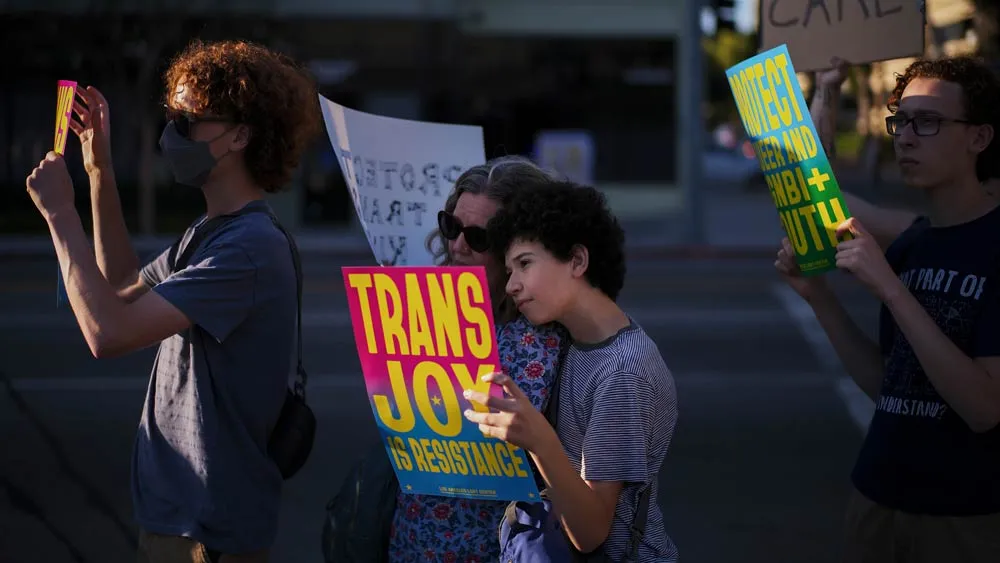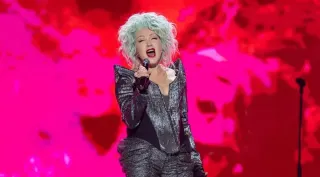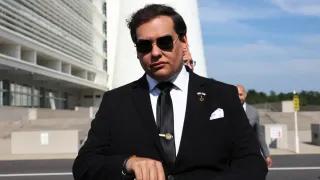May 2, 2014
Updated Pentagon 'Human Goals Charter' Includes Gay, Omits Transgender
Kilian Melloy READ TIME: 3 MIN.
Top military officials Monday attached their signatures to the Defense Department's updated Human Goals Charter that for the first time is inclusive of gay servicemembers, but fails to mention transgender Americans.
The aspirational document, which was first published in the late 1960s, details a culture of inclusiveness that values all individuals. Although "sexual orientation" was added as an enumerated class in 1998 with regards to civilian defense employees, the document signed today goes further, stating that the department strives to "make military service in the Department of Defense a model of equal opportunity for all regardless of race, color, sex, religion, sexual orientation, or national origin."
Moreover, the document states as a goal the fostering of a culture that "treats all individuals as full and equal partners on the National Defense team, and encourages the fullest utilization of their skills consistent with DoD policy." The updated document comes after the the repeal of "Don't Ask, Don't Tell" in September 2011 and the U.S. Supreme Court's decision last June to strike down the federal government's definition of marriage as between a man and a woman.
"What makes America unique, what gives us strength is our ability to self-correct," Defense Secretary Chuck Hagel said during signing ceremony at the Pentagon. "Our democracy is imperfect. All democracies are imperfect. But we have shown we can change. We have the process. We have the fiber. We have the people. We have the system to change for the better, and we have. We possess an ability and a system to correct our course. That's why I'm very proud that the language of the charter has been updated to reflect the contributions of gay and lesbian military personnel, who now serve openly and proudly across America's armed forces."
Although Pentagon officials have described the Human Goals Charter as "the cornerstone document for the Department's treatment of people, as well as its diversity and equity programs," LGBT-rights advocates were less enthusiastic about the ceremonial step taken today.
"Today's change to the Human Goals Charter is a welcome, but symbolic gesture - a first step toward ensuring gay and lesbian service members are treated equally," said Army veteran Allyson Robinson, who serves as policy director for SPART*A. "The next logical step is to amend related DoD directives to add sexual orientation to military equal opportunity and non-discrimination policies; only then will gay and lesbian service members be protected."
According to SPART*A, the charter provides no recourse to individuals who have experienced discrimination, which is instead contained within Defense Department Directives 1020.02, 1350.2 and other related directives. Moreover, a medical regulatory ban still prohibits transgender military service, and transgender civilian defense workers were also not mentioned in the updated charter.
"While this is a positive step, it's very disappointing that the Department of Defense missed this opportunity to make clear its commitment to equal opportunity for transgender civilian workers," said National Center for Transgender Equality Executive Director Mara Keisling in a statement. "Transgender civilian workers at the Department of Defense are protected under sex discrimination laws because EEOC precedent makes clear that sex discrimination law protect transgender workers in all federal civilian contexts including the Department of Defense. We hope the Department will make this explicit in its civilian EEO policy, and will soon review the outdated rules, and remove the prejudice from those rules, that prevent transgender service members from serving openly and safely."
An independent commission led by a former U.S. surgeon general and retired admiral concluded in a study released last month that there is no compelling medical rationale for banning transgender people from serving in the American military. According to that report, there are approximately 15,450 transgender personnel who currently serve in the military's active, Guard and reserve components.
Although Hagel made no mention of those transgender Americans during his remarks today, he appeared to allude to the continued fight for equality that is expounded as a goal in the charter.
"While there has been much progress made, all of us know there is still more work to be done. We must reinforce a culture of accountability, dignity, and respect across DoD and for all people. That is a top priority for all of us," Hagel said. "Every person who serves our country in uniform has stepped forward with courage and commitment. Their patriotism, their willingness to serve their country, and their qualifications to do so - that's what matters, nothing else."
Kilian Melloy serves as EDGE Media Network's Associate Arts Editor and Staff Contributor. His professional memberships include the National Lesbian & Gay Journalists Association, the Boston Online Film Critics Association, The Gay and Lesbian Entertainment Critics Association, and the Boston Theater Critics Association's Elliot Norton Awards Committee.

 Copyright MetroWeekly. For more articles from MetroWeekly visit
Copyright MetroWeekly. For more articles from MetroWeekly visit 





